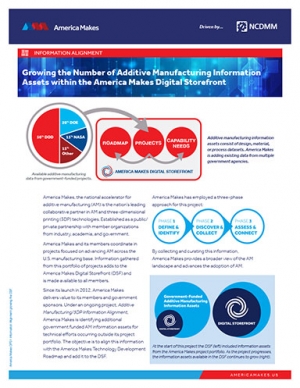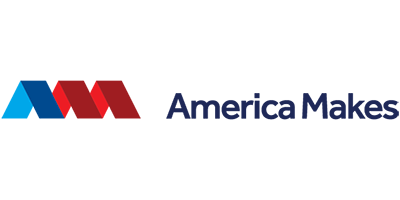America Makes’ Spring 2024 TRX Explores AM Advancements
The event was a knowledge hub for industry leaders to network and share innovative approaches across design, material, process and value chain, operations, and more.
Latest News
April 23, 2024
The spring Technical Review & Exchange (TRX) event hosted by America Makes, took place on April 9-11, 2024, at the Colorado School of Mines in Golden, CO. The 3-day event brought together engineers, decision makers, government officials, members and partners across the additive manufacturing industry, showcasing more than 30 projects and the Institute's exponential growth and achievements.
“America Makes is here to serve as the voice of the AM industry. We are working with those in industry and academia, the national lab network, and even beyond the Department of Defense (DoD), to understand the technical attributes to change our current state,” says Brandon Ribic, technology director at America Makes.
During TRX@Mines, keynote speakers delivered technical discussions. They included Zhenzhen Yu and Owen Hildreth from the Colorado School of Mines, Ryan Ott from the Ames National Laboratory, and Callie Higgins and Nik Hrabe from the National Institute of Standards and Technology (NIST).
In addition to research and development (R&D) updates, the event was a knowledge hub for industry leaders to network and share innovative approaches across design, material, process and value chain, operations, and beyond.
Metal AM Process and Advancements
NIST’s latest process monitoring developments across metal build part irregularities focused on fatigue and fracture behavior in critical applications to address these gaps. “I think as a community we're getting better at printing parts that, when possible, can have minimal defects and rough surfaces or internal pores no longer drive component failure,” Hrabe said.
To date, Hrabe and the NIST research team accomplished the following:
- Discovered new sources of variation in AM titanium and developed effective mitigation strategies.
- Led the development of two new ISO/ASTM standards for design guidelines and powder handling.
- Pioneered a novel fatigue-resistant AM titanium microstructure and introduced a cost-effective process control technique to enhance fatigue performance.
- Enabled the first-time use of AM titanium in critical medical device applications.
- Devised a resonant acoustic technique for speedy, cost-effective, nondestructive evaluation of AM parts.
In material development, Ott highlighted progress in developing refractory alloy powders for AM and the current industrialization challenges and opportunities. Utilizing data from existing oxide Dispersion Strengthened (ODS) methodologies, Ott claimed he and his team at Ames National Laboratory had seen incremental successes in developing high-performance aluminum alloys with higher melting temperatures.
Focus on Qualification and Standardization
TRX@Mines highlighted the significance of qualification and standardization in hastening AM adoption in aerospace and defense. Delta qualification projects echoed the need for a standardized approach to AM to ensure quality, reliability, and safety.
Among the current six active projects, The Ohio State University Center for Design Manufacturing Excellence’s Ben DiMarco, Project Leader, discussed the project for Rapid Qualification Pathway for Metal Additive Manufacturing using PBF-L for Critical Applications in partnership with EOS. DiMarco's team has developed a data fusion approach that leverages optical cameras, tomography sensors, and machine data to streamline the metal AM process.
Similarly, Zack Simkin of Senvol discussed his team's project focusing on material allowables for qualification. Senvol and its team devised an approach to developing a material design that leverages machine learning (ML) algorithms.
Casting and Forging
AM's potential to improve the casting and forging (C&F) sector took center stage as several presenters demonstrated new findings as part of America Makes multi-year technology C&F roadmap. From Brady Williams from Wichita State University—National Institute for Aviation Research sourcing to Mayank Garg from Cleveland State University, members addressed several roadmap areas while offering attendees a deeper look into AM's enhancing potential for the C&F sector.
To view the content presented at TRX, visit: https://bit.ly/3wz0J42
More America Makes Coverage

Subscribe to our FREE magazine, FREE email newsletters or both!
Latest News
About the Author
DE’s editors contribute news and new product announcements to Digital Engineering.
Press releases may be sent to them via [email protected].





